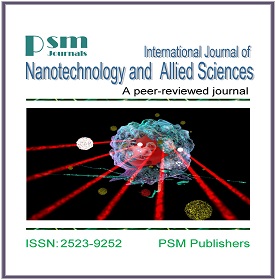Copper(II) Complexes as Potential Antibacterial Agents
Keywords:
Cu(II) complexes, Staphylococcus aureus, Bacillus spizizenii, Escherichia coli, Klebsiella pneumonia.Abstract
There is increasing interest in the use of copper (Cu)-containing complexes to combat bacterial infections. The antibacterial potential of two copper(II) complexes namely, (+) -(S)-2-(6-Methoxynaphthalen-2-yl) propanoic acid (Naproxen) and N-(4-Nitro-2-phenoxyphenyl)methanesulfonamide (nimesulide) was studied against a range of medically significant pathogens, including Staphylococcus aureus, Bacillus spizizenii, Escherichia coli, and Klebsiella pneumonia. The antimicrobial assay showed that the complexes are active against S. aureus and B. spizizenii, E. coli and K. pneumonia. Hence, complexes possess biological activities and can be used to treat medically significant pathogens.







